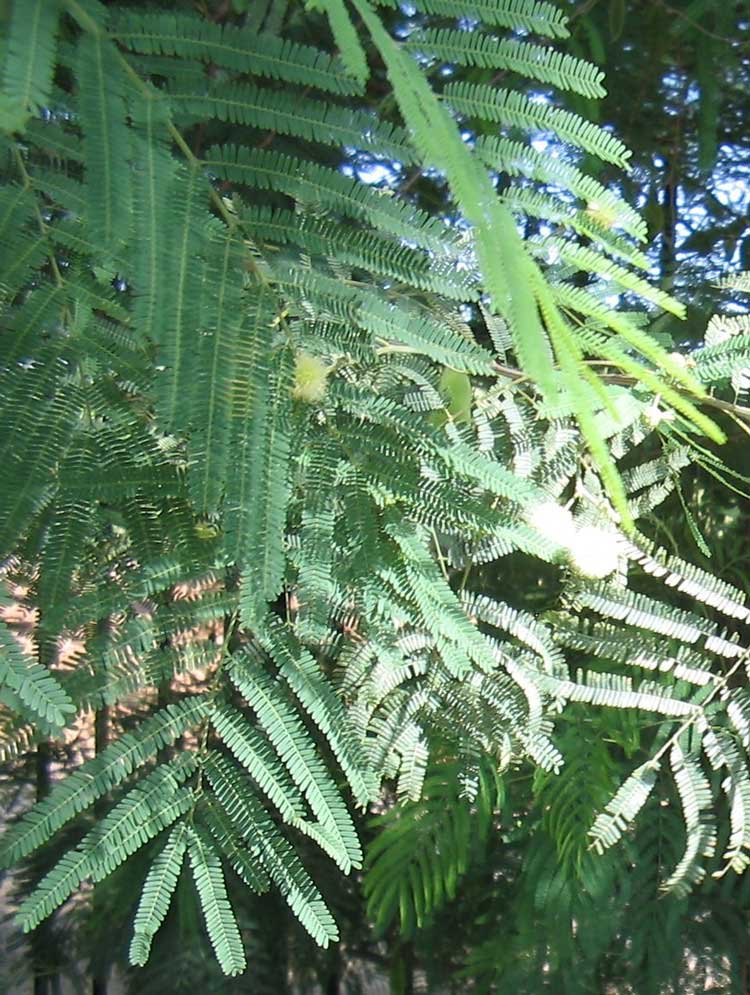
Senegalia berlandieri (Photo: * )
Classification System: APG IV
Superregnum: Eukaryota
Regnum: Plantae
Cladus: Angiosperms
Cladus: Eudicots
Cladus: Core eudicots
Cladus: Rosids
Cladus: Eurosids I
Ordo: Fabales
Familia: Fabaceae
Subfamilia: Caesalpinioideae
Tribus: Acacieae
Genus: Senegalia
Species: Senegalia berlandieri
Name
Senegalia berlandieri (Benth.) Britton & Rose, N. Amer. Fl. 23: 109 (1928)
Synonyms
Basionym
Acacia berlandieri Benth. (1842)
Heterotypic
Acacia tephroloba A.Gray (1852)
Distribution
Native distribution areas:
Continental: Northern America
Regional: Southwestern USA
Arizona
Regional: Mexico
Mexico Central, Mexico Gulf, Mexico Northeast, Mexico Northwest, Mexico Southwest
References: Brummitt, R.K. 2001. TDWG – World Geographical Scheme for Recording Plant Distributions, 2nd Edition
References
Primary references
Britton, N.L. & Rose, J.N., 1928. North American Flora 23(2): 109.
Additional references
Kyalangalilwa, B., Boatwright, J.S., Daru, B.H., Maurin, O. & Bank, M. 2013. Phylogenetic position and revised classification of Acacia s.l. (Fabaceae: Mimosoideae) in Africa, including new combinations in Vachellia and Senegalia. Botanical Journal of the Linnean Society 172(4): 500–523. DOI: 10.1111/boj.12047 Open access Reference page.
Links
Govaerts, R. et al. 2020. Senegalia berlandieri in Kew Science Plants of the World online. The Board of Trustees of the Royal Botanic Gardens, Kew. Published on the internet. Accessed: 2020 Aug 19. Reference page.
International Plant Names Index. 2019. Senegalia berlandieri. Published online. Accessed: Aug 19 2019.
Tropicos.org 2019. Senegalia berlandieri. Missouri Botanical Garden. Published on the internet. Accessed: 2019 Aug 19.
Catalogue of Life: 2021 Annual Checklist
Senegalia berlandieri – Taxon details on World Wide Wattle.
Vernacular names
español: Guajillo
Senegalia berlandieri (Berlandier acacia, guajillo acacia, guajillo, huajillo, huajilla) is a shrub native to the Southwestern United States and northeast Mexico that belongs to the Mimosoid clade of Fabaceae. It grows 1 to 5 metres (3.3 to 16.4 ft) tall, with blossoms that are spherical and white, occurring from February through April.[1] The berlandieri epithet comes from the name of Jean-Louis Berlandier,[2] a French naturalist who studied wildlife native to Texas and Mexico. S. berlandieri contains a wide variety of alkaloids and has been known to cause toxic reactions in domestic animals such as goats.[3][4]
Uses
Senegalia berlandieri is toxic to livestock and thus should not be used as forage or fodder.[5]
Alkaloids
Senegalia berlandieri contains a number of diverse alkaloids, the most plentiful of which are N-methylphenethylamine, tyramine, and phenethylamine.[3] The total alkaloid content in dried leaves has been reported to be in the range 0.28-0.66%.[6] In a recent study, researchers identified thirty-one alkaloids in samples of plant foliage, including trace amounts of four amphetamines previously known only from laboratory synthesis: amphetamine, methamphetamine, para-hydroxyamphetamine and para-methoxyamphetamine. Other trace alkaloids include nicotine, and mescaline (found in many cacti but infrequently in other plants).[3] The same group of researchers later reported finding most of the same alkaloids in A. rigidula, a related species also native to the Southwestern U.S.[7] There are no reports in the literature of these findings having been repeated, however, leading to the suggestion that they resulted from cross-contamination or were possibly artifacts of the analytical technique.[8]
Illicit use in supplements
After the FDA declared that the use of Acacia rigdula was unlawful in supplements (because of frequent adulteration with synthetic drugs), many supplement sellers began replacing previously reported 'rigdula' containing supplements with 'Acacia berlandieri'. Some of these products declare their Acacia extracts as containing Methylsynephrine, an entirely synthetic drug that has never been found in nature.[
References
University of Texas Native Plant Information Network
Holloway, Joel Ellis (2005). A Dictionary of Common Wildflowers of Texas & the Southern Great Plains. Texas Christian University Press. ISBN 978-3-540-63293-1.
B.A. Clement, C. M. Goff and T. D. A. Forbes (1997). "Toxic amines and alkaloids from Acacia berlandieri." Phytochemistry 46 249-254.
I. J. Pemberton, G. R. Smith, T. D. Forbes, and C. M. Hensarling (1993). "Technical note: an improved method for extraction and quantification of toxic phenethylamines from Acacia berlandieri." J. Anim. Sci. 71 467-70. http://www.journalofanimalscience.org/content/71/2/467.full.pdf
"Guajillo". Texas Toxic Plant Database. Texas A&M University.
Hegnauer, Robert mass (1994). Chemotaxonomie der Pflanzen. Springer Science+Business Media. p. 500. ISBN 978-3-7643-2979-2.
B. A. Clement, C. M. Goff, and T.D. A. Forbes (1998). "Toxic amines and alkaloids from Acacia rigidula." Phytochemistry 49 1377-1380.
"Acacias and Natural Amphetamine". Ask Dr. Shulgin Online. Center for Cognitive Liberty & Ethics. 2001-09-26. Archived from the original on 2002-12-27.
Retrieved from "http://en.wikipedia.org/"
All text is available under the terms of the GNU Free Documentation License

